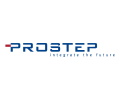

PROSTEP, a leading PLM integration solution provider for digital continuity and traceability, has joined the recently established OCX consortium as a founding member. OCX is a new data exchange format for model-based class approval, taking its roots from the DNV led project APPROVED carried out during the last few years supported by industry partners and PLM software vendors. The OCX consortium is set to industrialize the OCX format and acts as the maintainer of its specification.
The OCX approach compliments PROSTEP’s solution portfolio to build integration and collaboration solutions for companies in shipbuilding and other manufacturing industries. PROSTEP’s shipbuilding-specific integration platform, OpenPDM SHIP, supports OCX-based scenarios and enables connected CAD, PDM, and ERP systems to handle OCX-based processes and make them an integral part of the company’s digitalization architecture for product creation.
Class approval in shipbuilding today is still mainly a drawing-based process where the shipyards provide large format drawings to class societies to approve the ship’s hull structure design. Classification societies add annotations on the drawings and send them back to the shipyard or ship design company for design improvement if needed or approve the design according to the classification societies’ rules, i.e., stamp the drawing. The last years brought a gradual change from paper drawings to digital drawing files. However, the underlying process remains the same. The distributed use of OCX will provide an exchange format that would contain all information needed for the class approval process as a topological and parametric 3D model, thereby eliminating the need for drawings.
PROSTEP’s unique capabilities to connect into all major PLM system environments as well as shipbuilding specific solutions, including AVEVA, CADMATIC, NAPA, and SSI, is seen as a unique platform to enable model-based bi-directional exchange between ship designers and class societies and to allow a reliable and secure information flow even across company borders. It is possible to trace the delivery of 3D model data to class society, and the classification annotations can be directly processed by the shipyard and create a task or workflow in the company’s PLM environment. Built-in 3D PDF support would allow digital signatures and protect the data packages exchanged between shipyard and class.
Source: PROSTEP